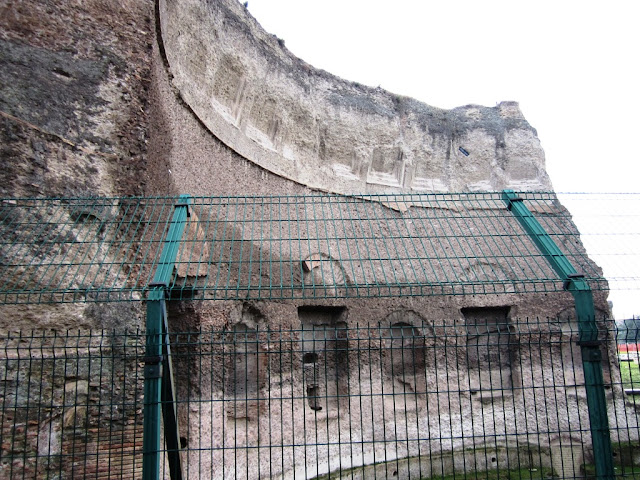 |
| Hall of the Emperors |
Right on top of the
Capitoline Hill is the Capitoline Museum (go figure).
The current building were designed by Michelangelo but not finished in
his lifetime. The pavement wasn’t finished until the nineteenth century,
because well the Italians know that it takes a long time to do
something right or wrong, or anything really, but that is all part of
their irresistible charm.
The treasures seem never ending but include: two giant heads of Constantine (one bronze and one marble) hundred is not thousands of Roman statues, a complete collection of Caravaggio paintings, the Capitoline wolf (which is outside to the left of the center palace on a terrace, easy to miss if you are not looking for it) and more and more and more...
This is a must see in Rome. Amazed that I have never been before.
The ticket office was in the New Palace (Palazzo Nuovo) though I think
we entered the museum through the Palace opposite (the Palazzo
Conservatorio). IT was rather confusing but I just followed some people
with camera who looked like tourists and we seemed to make it inside.
We also met some new American friends inside, though we tried to ditch
them, they kept popping up all over the museum. They were rather loud,
case in point: "Oh, hey it's our friends from that place with all the
rocks. Do you know where I can get a box of Franzia?"
 |
Capitoline Brutus or
Stone-face Vimes? |
 |
| Flavian Prom Queen |
For someone like me who has read so many books on Roman art and
history this was akin to being that kid in the proverbial candy store.
Everywhere I turned there was something I had seen photographed and
catalogued. From the Capitoline Brutus (the one who overthrew Tarquin
Superbus not the one who went all Joan Crawford on Julius Caesar) and the
Flavian Lady with her big prom queen hair to the dying Gaul and of course
the big marble head of Constantine. Which is really big. Admission is 12 Euros, or could have been a bit more? We were using the Roma Pass so we got a discount of a couple of Euros. All in all the Roma Pass saved up about twenty dollars in one day. If we had used it for public transportation as well then we would have made out like bandits, but I suppose there is too much to see in Rome to be stuck on a bus.
 |
| Tabularium |
If you find yourself in this museum be sure to look at the second floor where the original 15th century decorations are still intact. They are works of art in and of themselves. The ceilings, oh my.
The hall of Emperors is filled with busts and statues of…well…emperors, and also has a fairly impressive ceiling.
There is a treat hidden away beneath the museum; the remains of the Tabularium (the ancient roman hall of records) which is still pretty damned impressive two-thousand years later. The arches are awe inspiring and have some of the best views of the Roman Forum anywhere in the city. There is also an elevator that goes down to some excavations underneath the museum, the remains of the old citidal are visible, and a glass elevator is always fun... I am easily entertained though not a cheap date...
I could go on and on and on, there is far too much here to see in just a few hours and I could write a complete blog about it all.
 |
Dying Gaul and weird tourist that kept muttering about "nudes"
|



















































